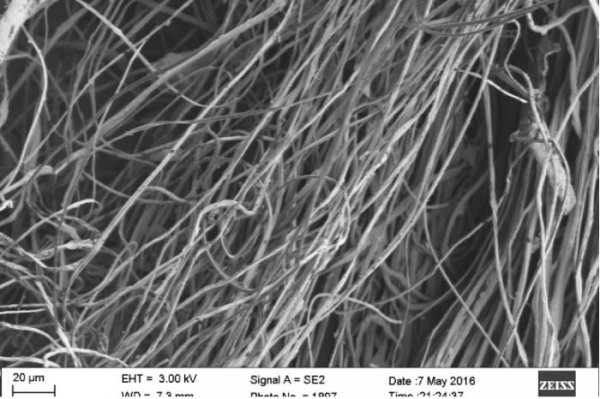According to foreign media reports, Kevlar and Twaron are well-known tough materials, but there is a trade-off between strength, heat resistance and weight. Now, researchers at Harvard University have created a new nanofiber version of the material, which has the same strength but is more thermally insulating.
The protective properties of Kevlar and Twaron come from their molecular structure, and changing this structure will change their effective effect. For mechanical strikes, such as bulletproof vests, the material will exhibit a highly ordered structure, allowing it to redistribute its power. Insulation material has more porous structure, which can minimize the heat passing through.

Generally, due to the basic characteristics of the material, it has been difficult to design equipment for protecting limbs from extreme temperatures and lethal projectiles that accompany explosions. Materials strong enough to resist ballistic threats cannot withstand extreme temperatures, and vice versa. As a result, most of today’s protective equipment is composed of multiple layers of different materials, resulting in bulky and heavy equipment that, if worn on the arms and legs, will severely limit the soldier’s ability to move. Researchers are now starting to combine the two types of materials into one.
"Our goal is to design a versatile material that can protect people working in extreme environments, such as astronauts, firefighters or soldiers, from many different threats they face," said Grant Gonzalez, the study's first author . To do this, researchers need to combine these two types of molecular structures - highly ordered and porous - into one material. It is made using a process called immersion rotary jet spinning (iRJS). Basically, a device rotates and forces the liquid polymer solution to flow out through a small hole, forming a long polymer chain. It hit the liquid bath nailed to the wall of the centrifuge and solidified. Then, these solid lines gathered around the base.
The researchers were able to adjust the viscosity of the starting polymer liquid so that the final thread had the desired characteristics. Finally, they were able to produce long, neatly arranged nanofiber sheets with many pores between them. Next, they must test whether the nanofiber sheet really protects ballistics and heat. In a test that fired BB-like projectiles on stacked sheets, the team found that the new material was as durable as ordinary Twaron woven materials.
In the thermal test, the researchers found that the thermal insulation performance of the new material is about 20 times better than commercial Twaron and Kevlar. Using the current settings, the team can spin out sheets with a size of about 10×30 cm (3.9×11.8 inches) in about 10 minutes, but this may be improved if the production scale is expanded.
"Although there is still room for improvement, we have broken through the possible boundaries and started to develop into this multifunctional material field," Gonzalez said.
The research was published in the "Matter" magazine.
Linyi Hmbyan International Trading Co.,Ltd , https://www.lhialuminumcomposite.com